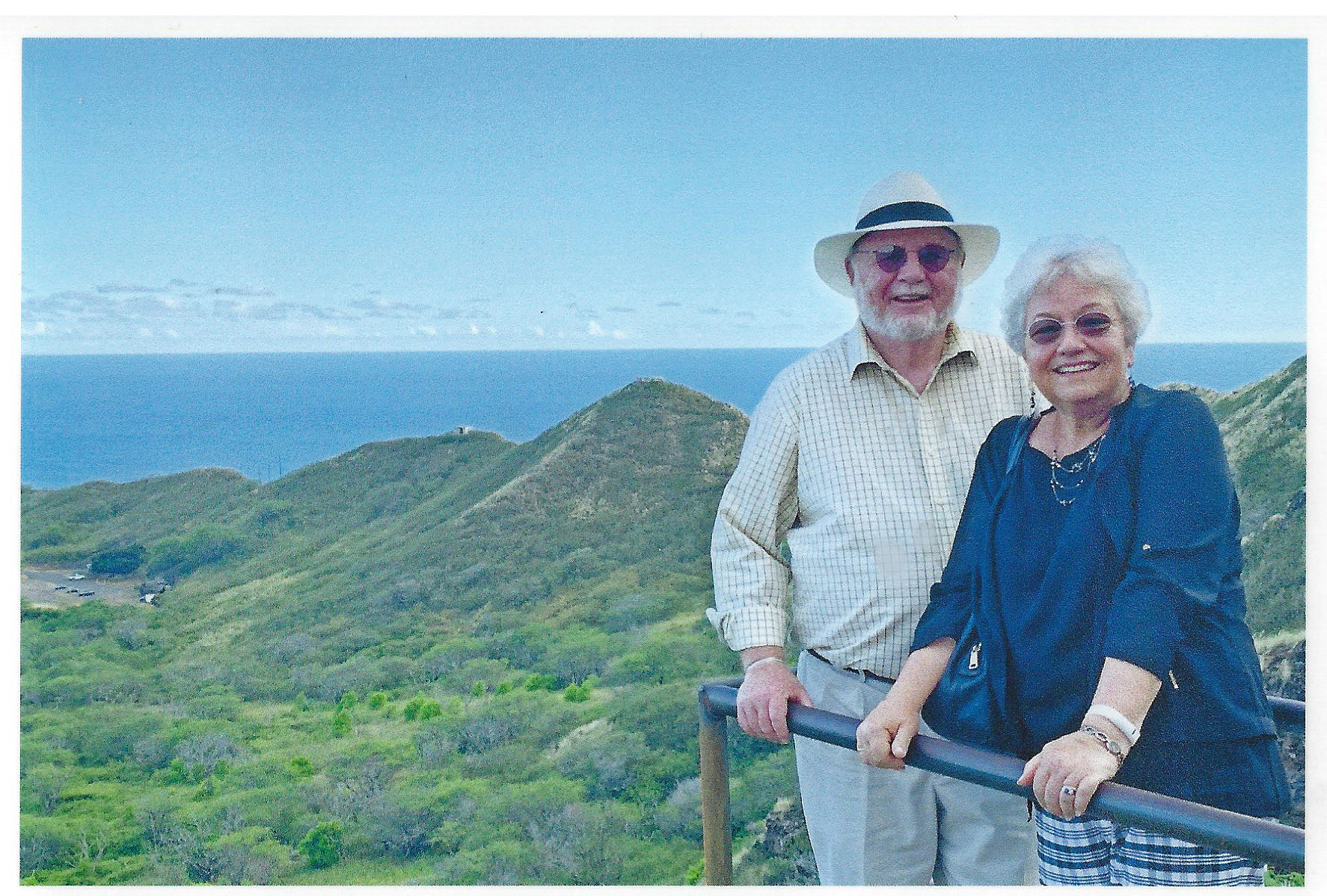
Rev. Roy Medley at the top of Mountain Head Trail with his wife Rev. Patricia Medley, two years after his spine surgery.
Minimally Invasive Spine Surgery for Spinal Stenosis and Herniated Discs
Sudden Back Pain Sends Man to ER
In November 2017, Reverend A. Roy Medley, 71, experienced such intense back pain while getting out of the car that he couldn’t stand up straight. The pain extended to the front of his leg. It was an unbearable, burning pain. “Like a blowtorch was on my leg,” he says. He thought he simply strained his back, but the pain got so bad, he went to the Emergency Room, where he was referred to Dr. Grigory Goldberg, a fellowship-trained spine surgeon at Advanced Orthopedics and Sports Medicine Institute. Dr. Goldberg completed his fellowship training at the prestigious Norton Leatherman Spine Institute.
Prior to this sudden onset of back pain, Rev. Medley was active and healthy, without any back pain. A husband, father and grandfather to two young grandsons, he kept busy with his family and volunteer activities. He enjoyed traveling with his wife Reverend Patricia Medley. He also remained active in ministry after retirement. Just two weeks before the back pain started, he was volunteering in a rural area in India to teach aspiring pastors.
Herniated Discs and Spinal Stenosis
So when he found out that he had two herniated disks, he was surprised, although he knew how the injury happened. While in India as a passenger in a car, his body took a beating as the driver rushed over potholes and bumpy roads while rushing to get him to the train. Rev. Medley didn’t know it at the time, but the impacts from bouncing on the car seat, caused his vertebrae in the lumbar area (lower back) to compress and the disks to weaken. This also caused spinal stenosis, a narrowing of the spaces in the spine.
“Mr. Medley had significant disc herniations that was crushing his nerves,” says Dr. Goldberg. “Usually, when herniations are not as severe as in this case, I treat patients with conservative options such as physical therapy and injections. Most people get relief with conservative treatment. In Mr. Medley’s case, the severity of his nerve compression required bypassing the conservative treatment and performing surgery.”
Minimally Invasive Laminectomy
Dr. Goldberg explained to Rev. Medley that treating his condition required a minimally invasive laminectomy. This would involve taking out the two disks that ruptured and fusing the vertebra with rods. It’s generally performed through a very large incision, but Dr. Goldberg is an expert in minimally invasive spine procedures. He was able to do the surgery with small incisions. Minimally invasive spine procedures result in less postoperative pain, less blood loss than open laminectomy and a quicker recovery.
Fearing the worst – that he wouldn’t be physically active and able to enjoy his retirement years – Rev. Medley underwent the procedure on November 29, 2017.
Now, after undergoing rehabilitation and a lot of walking as a part of his therapy, he’s active again and back to doing all the things he loves. Even more impressive, on November 17, 2019, alongside his wife, he climbed the Diamond Head trail in Hawaii, a one-mile excursion with an elevation of 500-hundred feet. He made it to the top, he says, thanks to the skills of Dr. Goldberg. “It was demanding, but I was able to do it,” he says. “It was great.”
Candidates for Minimally Invasive Lumbar Laminectomy
In some cases, minimally invasive lumbar laminectomy may not be the best option for surgical treatment. Some patients with scar tissue from previous surgery, spinal deformities, or excess obesity may benefit from traditional open back surgery instead. Not all patients and not all conditions can be treated via a minimally invasive approach.
Recovery after Lumbar Stenosis Surgery
Patients typically begin walking immediately after lumbar stenosis surgery. Patients generally go home the day after surgery, even if more than one level in the back requires surgery. By two weeks post-op, most patients are reducing their pain medication usage. Many already note an improved ability to walk and are standing up straighter than prior to back surgery.
As for Rev. Medley, he says he’s flexible and mobile, can do anything he wants and no longer has any complications with his back. He enjoys working in the garden, playing with his grandkids, traveling and continuing his ministry. He was even able to run alongside his grandson when teaching him to ride a bike.
“This may seem ordinary to everybody else, but when you had the possibility of not doing that, and then you are able to do it, it’s like a small miracle. I’ll never take my healing, surgery or the skill of Dr. Goldberg for granted. He’s a fantastic surgeon,” he says.

